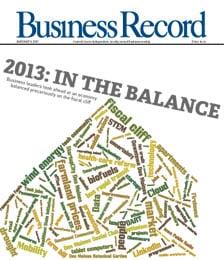Family business planning isn’t easy

.floatimg-left-hort { float:left; } .floatimg-left-caption-hort { float:left; margin-bottom:10px; width:300px; margin-right:10px; clear:left;} .floatimg-left-vert { float:left; margin-top:10px; margin-right:15px; width:200px;} .floatimg-left-caption-vert { float:left; margin-right:10px; margin-bottom:10px; font-size: 12px; width:200px;} .floatimg-right-hort { float:right; margin-top:10px; margin-left:10px; margin-bottom:10px; width: 300px;} .floatimg-right-caption-hort { float:left; margin-right:10px; margin-bottom:10px; width: 300px; font-size: 12px; } .floatimg-right-vert { float:right; margin-top:10px; margin-left:10px; margin-bottom:10px; width: 200px;} .floatimg-right-caption-vert { float:left; margin-right:10px; margin-bottom:10px; width: 200px; font-size: 12px; } .floatimgright-sidebar { float:right; margin-top:10px; margin-left:10px; margin-bottom:10px; width: 200px; border-top-style: double; border-top-color: black; border-bottom-style: double; border-bottom-color: black;} .floatimgright-sidebar p { line-height: 115%; text-indent: 10px; } .floatimgright-sidebar h4 { font-variant:small-caps; } .pullquote { float:right; margin-top:10px; margin-left:10px; margin-bottom:10px; width: 150px; background: url(http://www.dmbusinessdaily.com/DAILY/editorial/extras/closequote.gif) no-repeat bottom right !important ; line-height: 150%; font-size: 125%; border-top: 1px solid; border-bottom: 1px solid;} .floatvidleft { float:left; margin-bottom:10px; width:325px; margin-right:10px; clear:left;} .floatvidright { float:right; margin-bottom:10px; width:325px; margin-right:10px; clear:left;}
Family business members are required to have hard conversations at a level that most outsiders can’t imagine.
• Which of our siblings stands out as reliable, smart and good with people?
• When will Dad die, and how soon do we need to begin preparing to replace him?
• Who in our family will inherit the family legacy and why?
Family business owners know that they need to establish clear performance expectations for family members, craft a succession plan and hold one another accountable, yet many don’t. It is obvious why. These conversations can be excruciating and awkward.
Family business members often feel that they are in a lose-lose situation. On the one hand, they know that in order for the business to survive, they must bring in only those family members who are the right fit; set expectations and give one another hard feedback about performance; and plan for who will take over the operation in the next generation.
On the other hand, for some, attempts to have such conversations haven’t gone well, and the consequences for family relationships were unpleasant.
Family businesses, including family farm operations, are a key driver in the Iowa economy. It is in the best interest of everyone in the state that family businesses successfully negotiate difficult conversations so they survive.
Fortunately, there are strategies to effectively manage these conversations. These strategies start with questions such as:
When did your family have a really hard conversation that went well? If your family was able to have a productive and respectful conversation about what to do about your grandfather with Alzheimer’s disease after your grandmother died, reflect on that conversation. What made that hard conversation go well? Who took what roles? What personal agendas did people put aside? Then ask, what can we learn from that conversation that applies to the hard family businesses conversations?
What should we do with these answers?
Plan for a hard family conversation as if it were a meeting with your biggest client. Go through the list of all the items you would pay attention to for such a meeting: Choose the best location and timing; decide who should be there; list the strengths of each participant and how can they be used most productively; and define the desired outcome, along with a plan to avoid being sidetracked from reaching it.
Commit to value both the family and the business. The only “good” solution is one in which both the family and the business win.
Get out of isolation. In your community or your industry, there are many businesses that are family-owned. Look for others who have similar businesses or family structures and get to know them. Talk about the challenges of family businesses, and you might find advice from someone who has been there.
If you have tried everything you know how to do and still feel “stuck,” it’s time to ask for help.
Michelle Clark is a business psychologist with Jensen Consulting, specializing in family-owned businesses.






